Making preparations for a climb to Nepal's Everest Base Camp? Here are some ideas about how to prepare for Everest Base Camp Trek ?
Information about the Everest Base Camp Trek and trekking preparations in Nepal:
Namaste!
You may have a dream to trek to the
Everest Base Camp one of the iconic trek in the world. Hiking to Everest base camp is rewarding while we follow
the classic route that
Sir Edmund Hillary and
Sherpa Tenzing followed in
1953, they made first successful ascend to the roof of the world. Also called top of the world “
Sagarmatha" in Nepali and Mother goddess or
Mt. Chomolungma in Tibetan / Sherpa Language Mt. Everest attracts over 40,000 trekker a year and couple of thousand real Climbers. We at
Earthbound Expeditions an award winning best adventure, travel and trekking company in Nepal, Kathmandu is taking 1000s of trekkers each year to Everest base camp and beyond safely. There are several trek in Everest like 16 days Everest Base Camp trek,
12 days Luxury Everest Heli trek,
8 days Everest Panorama trek,
20 days Gokyo lakes and Everest Base Camp trek, about
22 days Island peak and Everest base camp trek, you name it, we can organize over 15 different itinerary for you in Everest region alone. Earthbound Expeditions is recommended by
Lonely Planet,
Trip Advisor,
Newyork Times,
The Guardian, and many other national and international newspapers and magazines for our good services.
When you want to plan a trip to Everest base camp, you may be continuously on Google searching "The best and most efficient technique to prepare for Mount Everest Base Camp trek in Nepal" and whom to book with. You may have lots of questions regarding trekking to Everest base camp like
"How challenging is the Everest Trek ?"
"How physically fit do you need to be to trek to Everest Base Camp?"
"Is climbing to Everest Base Camp dangerous?"
"How will the accommodations be on the Everest Expedition be?"
"What type of equipment and gears will you require for the Everest Trek?"
"Do you require a porter or guide to accompany you in the Everest Trek?"
"What time of year is ideal for trekking Everest?"
"Which trekking agency should I choose to make my trek plans in Nepal?"
So to answer majority of your questions instead of reading numerous websites and blog posts on interest about Everest trek preparations, we at Earthbound Expeditions at this post try to provide you answers to all of your questions plus more tips here.
We hope it will help you plan and prepare for your trek to Everest Base Camp and beyond in Nepal Himalaya.
What time of year is ideal for trekking Everest ?
You can actually trek to Everest Base Camp all year around, we will say any time of the year ( but recommend to avoid July to mid Sept. and Dec to Mid Feb). During the summer month of July and August treks are fine but some days flight to Lukla may be delayed for several days ( small airport and weather depending on landings / take off). In winter months of Dec. January and February, the temperatures can drop to way below freezing ( -10 to 20 DC) and snow will cover the higher ground blocking the trek trails. The majority of lodges on trek trails in higher elevation ( specially above Namche) will close down it can be difficult to find accommodation and meals. It is also advisable not to trek during the monsoon season of July to mid September the trails can become muddy impassable due to landslides and rock falls, it’s also not nice trekking in rain, although after Dingboche it rains less and in recent years we have arranged many trek in June and also late Sept. months as weather pattern in Himalayas are changing a bit. Could be a effect of global warming we shall act responsibly together to save the planet Earth !
The ideal seasons for a hike to Everest base camp are during the months of late Feb, March to mid June and late Sept., October to around the middle of December. From March through to the mid of June usually by late morning the clouds start to roll in and the snow cover on the mountains is minimal, but it’s the time when climbers descend on Base Camp to attempt to summit Everest, so the trails are full of trekkers, yaks and climbers, specially many climbers wanted to be on the top of Mt. Everest around May 29th that is when first time sir Edmund Hillary was on top of Everest in 1953. Now there is a demand that around the world from climbers and other community that we shall Celebrate May 29th as Everest ( Sagarmatha) day.
Late Sept., October until early December can be a great time to trek to Everest Base Camp in Nepal, we mostly will get blue sky, days are usually clear offering amazing views of the freshly, snow covered mountains. Towards the end of November into December, the Everest trek trails become less crowded which can make your trek more enjoyable, but the nights become cold, frequently dropping into minus figures. So be prepared for some snow and cold weather if you wish to trek to Everest base camp mid November onward.

How physically fit do you need to be to trek to Everest Base Camp and is there age restrictions ?
If you are healthy and enjoy outdoor walking you are good to take the Everest base cam trek. Of course the fitter you are the easier it will be to trek, but that doesn’t mean you’ve got to be super fit. We have experience of taking
9 years old kids to 76 years old senior trekker to Everest base camp. We recommend if you can a couple months before trek please go on a long walk / hike every weekend. Some yoga / breathing exercise may help to get your lungs on shape. To be honest as long as you take it slow and steady and listen to your body you’ll be fine to trek, surprisingly many of our trekkers to Everest is doing first time such long trek and of them are senior trekkers 50 years plus and they all made it safely to Everest base camp and back. If you are really short on time and have issue with knee you can fly back from
Everest base camp to Lukla or to Kathmandu with helicopter at extra cost too.
What does it cost to get to Everest Base Camp?
The cost of trekking Nepal depends on how you decide to go about it. If you decide to trek independently you will spend on average between $40 to 45 a day on food and accommodation, plus any snacks you may want to buy during the day. Some of the lodges may let you stay for free or in a few $ as long as you eat your meals at the lodge. If you take the independent trekking route you will also have to arrange and pay for transport to and from the domestic terminal at Kathmandu airport, flights to Lukla which cost $148 one way (unless you plan to take a long route and trek from Jiri or Shivalaya, which will add a further about a week to your trek) plus your TIMS card and the Sagarmatha National Park entrance fees which costs $20 and $30 respectively.
Another option is to contact a local trekking agency in Kathmandu like
Earthbound Expeditions and get customized itinerary for you. We arrange the flights and permits and provide experienced guide and porters, beforehand make sure you spend some time getting to know them. You will be spending 2 weeks trekking with the guide so it’s good to get on together. The price of a porter can range between $25 – $35 a day. This option provides a happy medium between the cost of trekking independently and going with a private group trek.
Also there are literally hundreds of international and local companies offering group tours to Everest Base Camp, you can book Everest base camp trek with us. The positives of joining a group trek are, that everything is arranged for you, all you have to do is get yourself to Kathmandu. You will also get to meet and trek with a group of 2 -12 people from all over the world, giving you a chance to make new and possibly life long friends while trekking in Nepal Himalaya. Trekking with a reputed local travel agency like Earthbound Expeditions is safe, reliable and your contribution goes towards the local community.
The downside of group trek could be not much changing on agreed itinerary, everything is arranged from the trekking itinerary to each lodge you will stay at. You will also may feel bit expensive sometimes compared to going independently but at the end the safety and enjoyment of the trek may compensate it though.
What is the accommodation like on Everest trek?
The trekking tea houses or lodges along the trail is basic but comfy but if you are really looking for luxury accommodation is your thing then maybe this trek isn’t for you, although few nights we can get fairly good lodges like
Yeti mountain homes or
Everest summit lodges. Each tea house has a number of rooms, usually consisting of two single beds with one pillow and blanket, a shared bedside table and a few coat hooks. Some of the walls are consist of thin plywood/chipboard, so you will hear what your neighbours are up to, so bring earplugs. Most of the places is possible to find rooms with an ensuite toilets and good rooms and we for all Earthbound Expedition’s trekkers to Everest use good lodges along the trek trails. Also not to forget many of the agency use basic guest houses and also some of them have shared toilets. Hot showers are available but it will cost you and once you’re above a certain height once you’re wet, it’s hard to get warm again. But don’t be put off, overall the tea houses are well maintained, clean and comfy, many of the trekkers are surprised after the trek with the quality of guest houses and food. We are sure you will enjoy the trek in Nepal Himalaya with us.
What type of equipments and gears will you require for the Everest Trek?
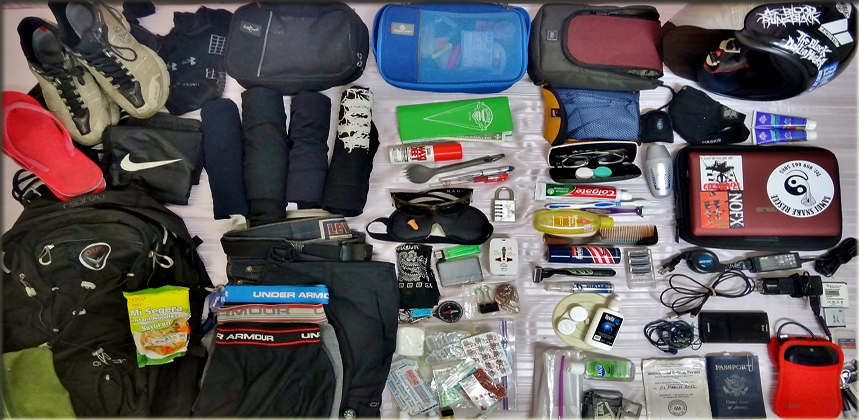
The trekking gear while in Nepal hiking is completely down to the choice of the person doing the trek, you could spend a fortune on all the different gear you may need for the trek to base camp but you can also get by with the bare basics. For you we have highlighted the three most important things you must have on your trek, without these the trek to Everest base camp will become a lot harder and uncomfortable, but still not impossible.
1 x Thermal Jacket ; If you have good one with you please bring, if not we will provide for free to use while on trek. Or This can be hired in almost every other shop in Thamel, Kathmandu for around 100 rupees ($1) a day. You can also buy them for a good price depending on your bartering skills. Just don’t expect them to last much longer than the trek because many of them are North fake not North face!
1 x Sleeping Bag – Majority of the tea house lodge on trek provide Blankets, so not really necessary to carry one. But if you have a sleeping bag at home you can bring with you or you can hire a sleeping bag once in Thamel for around 100 rupees a day. If you are travelling in winter you need to get at least a three season bag to stay warm.
1 x Hiking Boots/Shoes – Comfortable shoe is one item that shouldn’t be overlooked and worth spending money on. You will be walking on average 5-6 hours a day, so you need to look after your feet. Make sure your boots are comfy and well broken in before attempting the trek, you don’t want to make it harder for yourself by getting blisters along the way.
What permits and documents do I need to trek Everest Nepal?
To trek to Everest base camp you will
need to get a
TIMS Card and
Sagamartha National Park entrance fee and Khumbu Village development charge entry fee too. To get permits you will need to provide the dates of your planned trek, an itinerary and contact number. You will also need a copy of your passport and provide two passport sized photos. If you’re trekking with Earthbound Expeditions will take care of this and it should be included in the price. If you are an individual trekker you will need to go to the
Nepal Tourism Board office in Kathmandu or Pokhara and apply for trek permit yourself.
You will also need to pay the Sagamartha National Park entrance fee, this can be paid for at the entry point on the trail in Monjo or beforehand in Kathmandu at the Tourist Service Centre. For more information please visit the website here
www.welcomenepal.com.
It is also advisable to contact your countries embassy upon arrival to Nepal, to let them know of your planned trekking dates and route. It’s also a good idea to carry a copy of your insurance details and emergency numbers.
How to prevent and deal with altitude sickness while on Everest trek?
Altitude sickness or acute mountain sickness ( AMS) is one of the major issue on Nepal treks if you don’t plan trek itinerary well, but to be honest it can affect anyone and any time. You could be the fittest person on earth but still succumb to the effects of altitude (AMS), no one knows when it will happen or at what altitude and if you are unfortunate to get altitude sickness the only way to recover is to descend back down to lower altitudes. Minor symptoms of altitude sickness are headaches, loss of appetite and insomnia, most people will experience at least one or all of these symptoms, we had all three at some points of the trek. Severe symptoms include shortness of breath, at rest, severe headaches, vomiting and diarrhea, dizziness, coughing, retinal hemorrhage and Edema. But while some of the symptoms sound terrifying very few trekkers get severe altitude sickness on the trek to Everest base camp, there are steps to try and prevent altitude sickness and reduce your risks.
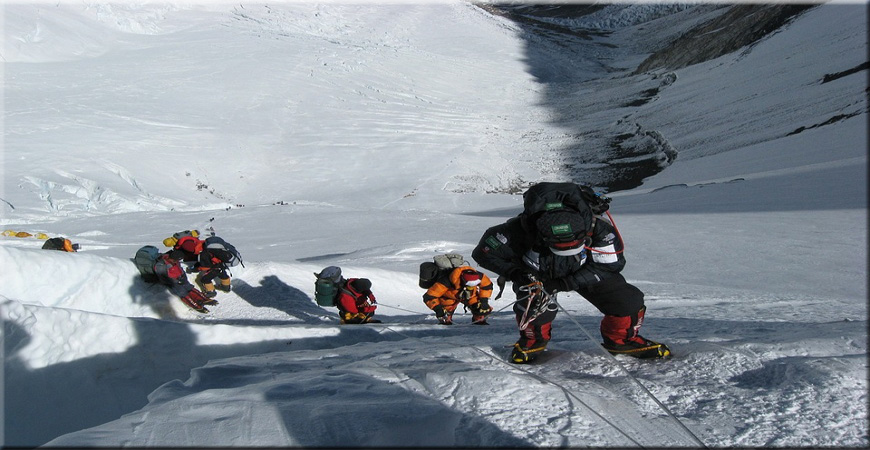
All our itineraries to Everest Base camp trek at Earthbound Expeditions are field tested and well planned and while on trek our trained guides will take care of health and well being. But if you are trekking independently while booking or planning your trek to Everest Base Camp make sure the itinerary includes at least two acclimatization days. Depending on the route you take the acclimatization days are usually day 3 at Namche and day 6 at Dingboche. These acclimatization days are essential for your body to acclimatize to the change in altitude helping your chances to a successful and safe ascent. Once you reach 3,000m you should not increase the altitude at which you sleep by more than 300 – 400m a night. It’s advised to climb high and sleep low, so for example when you land in Lukla to begin your trek your first night will be in Phakding which is 200m below your starting point.
Drink plenty of water, you need to drink between 3 – 4 litres every day to keep you hydrated, trekking at altitude can dehydrate you very quickly due to less moisture being in the air and water vapor evaporating from your lungs at a higher rate and you will be also sweating a lot.
Take it slow, the slower you go the better so body gets times to acclimatise. It’s not a race to the top, take your time and let your body adjust. There is also a host of drugs you can buy that will help prevent/cover up symptoms of altitude sickness but we are not in a position to recommend this although many people we have seen taking diamox.
What is the food like on the Everest trek, and how easy is it to get water in Nepal trekking?
We have 25 years of Experience taking people to the mountains and majority of them loved Nepal food. Some people think the food got worse the higher they go, it may be because they might be also loosing their appetite. Tengboche and below the food may be nice, meat is available but we recommend vegetarian food for the duration of the trek just to be safe. Everything in the mountains has to be carried up so really don’t want to risk eating meat that it could have been not refrigerated for 2/3 days.
The types of dishes you’ll expect to see are along the lines of veg noodles, noodle soups, all types of cooked eggs, Dal Bhat ( rice and lentil with some curry), which is the mainstay of Nepalese food, they eat it 2 times a day, every day. You should definitely try it. Fried rice, veg fried rice, Momo and pizzas (yes up there!). The breakfast menu is quite good, you could have tea, coffee, toast, porridge, fruit, muesli and fried potatoes and eggs.
As for getting water on the trek, bottled water is readily available and can be bought almost everywhere, but it’s expensive. The cheapest could be 100 rupees and the most expensive at Gorak Shep is about 400 rupees, compared with 25 rupees in Kathmandu. The prices rise the higher you go which is understandable. To save money and environment we encourage to use treated water. You can either buy iodine or water purification tablets in Kathmandu or at home and ask the lodge or your guide to fill your water bottle each time. Or the other option is to get a water purification system, we used a Steri Pen.
Can you connect and access to the internet while trekking in Everest Nepal?
While trekking in Nepal you can get internet but the majority of the time it will cost you. All the lodges have WiFi but you’ve got to pay for it, and the higher you go the more expensive it is. At Dingboche it is about 500 rupees for unlimited WiFi but in the evenings the signal usually goes. Some places WiFi may be stronger. So connect less to the device and connect more to the divine, after all you are at the highest point on earth, we call it HEAVEN.
Upon arrival to Nepal, You can buy sim card ( Ncell or NTC) at the airport and you will receive 3G or 4G signal all the way up although some times it may lost it and reappeared again ( on and off).
How long is the Everest base camp trek ?
The classic Everest base camp trek where you fly in and out of Lukla ( or Ramechhap a airport about 132 KMs out of KTM - 3 hours drive), trek to base camp and back safely takes 12 days ( Kathamndu to Kathmandu about total 16 days trek) which includes two acclimatisation days that are a must. We suggest not to attempt the Everest trek without including these acclimatization days. If you decide to walk in from Jiri or Shivala to Lukla and then to base camp you can add a further a week to your trek.
If you have more time there are of course other options which you can add on to your Everest base camp trek, such as Cho la pass and Gokyo lakes, Ama Dablam base camp and even climbing island peak. You can also finish Everest base camp trek in 12 days if we take helicopter from Gorekshep to Kathmandu).
Its possible that during the upcoming season (Sept to Nov of 2022) all Lukla flights will be flying from Ramecchap instead of Kathmandu to go to Everest base camp.
Flying in and out of Ramecchap does not change anything regarding your trek to Everest. Although it is an inconvenience and added challenge to have to get up earlier and travel back and forth to Ramecchap on a windy mountain road.
Should I book a group trek or can I trek solo in Nepal?
Either you trek alone or with a group, this is something only you can decide and is down to personal choice and cost. Both have positives and negatives, with a group it gives you a chance to make good friends with people from all over the world, everything is arranged for you, so all you’ve got to do really is turn up and walk. Enjoy the trek while agency like Earthbound Expeditions take cares everything for you. If you don’t like your own company then this would ideally be the best option.
Trekking independently gives you a bit more freedom to stop as much as you want, decided which lodges you want to stay at and extend your trip if wanted. Unless your trekking in the off season your never be lonely on the trail and will have plenty of people to chat to once you’ve arrived at the lodge. Trekking independently can be dangerous and if possible it’s always best to find another person to walk with, the Himalayas can be a dangerous place and you wouldn’t want to be on your own if you get into an accident or suddenly become ill. Also trekking with local agency provide Job to local, you get more knowledge about local culture, food and costume.
Which hike in Nepal should I choose: the Everest or another one?
We hope you have found the above information helpful, and hopefully, would have answered some questions on how to prepare for a trek to Everest base camp. If you are planning to go and have any other questions, comment below and we will do our best to answer them for you. Have a safe trip to Nepal Himalaya and beyond and we will love to help you further to plan your trip of a life time! Namaste!

Earthbound Expedition is reliable and affordable travel and trekking agency in Nepal specializing in trekking and expedition journey, however, they also offer other kinds of holiday packages. Their itineraries include activities like helicopter tour, food and cultural tour, luxury tour, jungle safari, mountain flight, and so on. They cover the most popular and off-the-beat tourist destinations in places in countries like Nepal, Tibet, and Bhutan tour. One of the most crucial attributes of Earthbound Expedition is that they prioritize client satisfaction. They even allow their clients to play an active role in the itinerary designing process.
Their objective is to help the tourists have the most amazing time during their journey to Nepal. The one that is filled with special moments and memories. They are also known for their outstanding support. No matter the problem, their clients can always look up to them in times of need. If you’re looking to visit any of these places during your upcoming vacation and try out these activities, make sure to choose Earthbound Expedition as your travel partner. You’re sure to have an amazing time during your vacation in Nepal, with them by your side taking care of all your needs.Feel free to contact for more information.





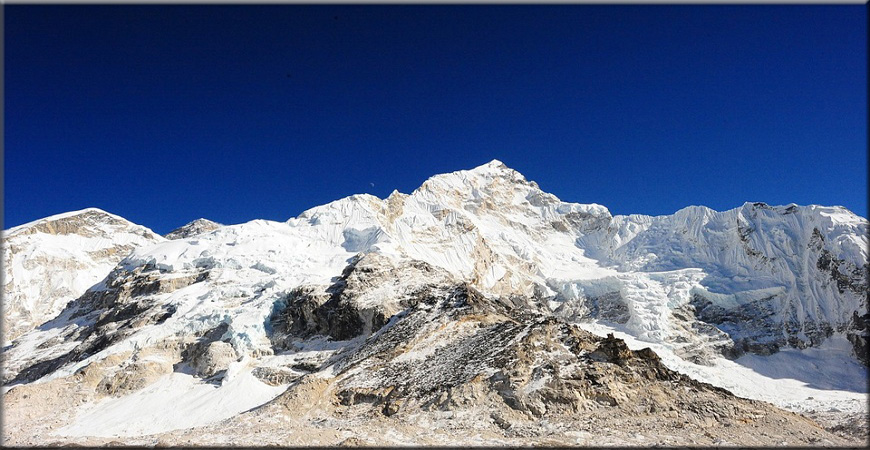





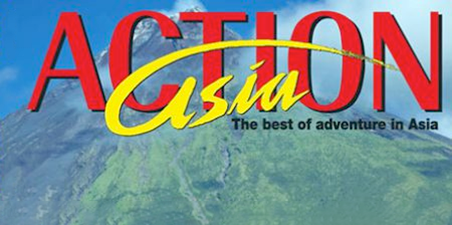

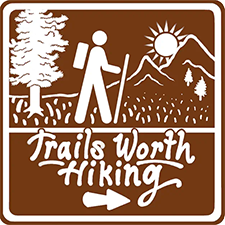







Comments